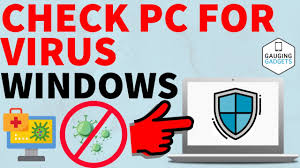Protecting Your PC: How to Check for Malware
Malware, short for malicious software, can wreak havoc on your computer system without you even realizing it. From stealing your personal information to slowing down your PC’s performance, malware poses a significant threat to your online security. That’s why it’s essential to regularly check for malware on your PC and take steps to remove it promptly.
Types of Malware
Before we dive into how to check for malware, let’s first understand the different types of malware that can infect your PC. Common forms of malware include:
- Viruses: Programs that replicate themselves and spread to other files and systems.
- Worms: Self-replicating programs that spread across networks without any user intervention.
- Trojans: Programs that appear harmless but contain malicious code that can steal your data.
- Spyware: Software that covertly gathers information about a user’s activities.
- Ransomware: Malware that encrypts your files and demands payment for their release.
How to Check for Malware
Now that you know the different types of malware, here are some effective ways to check for malware on your PC:
1. Use Antivirus Software
One of the most efficient ways to check for malware is to use antivirus software. Make sure your antivirus program is up to date and perform a full system scan regularly. Antivirus software can detect and remove a wide range of malware, keeping your PC safe from threats.
2. Update Your Operating System
Keeping your operating system up to date is crucial for protecting your PC from malware. Software updates often include security patches that can prevent malware infections. Enable automatic updates on your system to ensure you’re always running the latest version.
3. Be Cautious of Email Attachments
Malware can often be disguised as email attachments from unknown sources. Avoid opening attachments or clicking on links from suspicious emails. If you’re unsure about the legitimacy of an email, contact the sender directly to verify its contents.
4. Stay Away from Suspicious Websites
Some websites are known for spreading malware through malicious ads or downloads. Be cautious when visiting unfamiliar websites and avoid downloading software from untrusted sources. Stick to reputable sites to minimize the risk of malware infections.
What to Do If You Find Malware
If your malware scan detects threats on your PC, take immediate action to remove them. Follow these steps to get rid of malware effectively:
- Quarantine: Move infected files to a secure quarantine folder to prevent them from causing further harm.
- Remove: Use your antivirus software to delete or quarantine malicious files from your system.
- Reset: Reset your browser settings to remove any malicious extensions or plugins that may have been installed.
- Check for Updates: Update your antivirus software and operating system to prevent future malware infections.
By following these steps and taking proactive measures to protect your PC, you can ensure that your system remains safe and secure from malware threats. Stay vigilant, stay informed, and keep your PC running smoothly.
